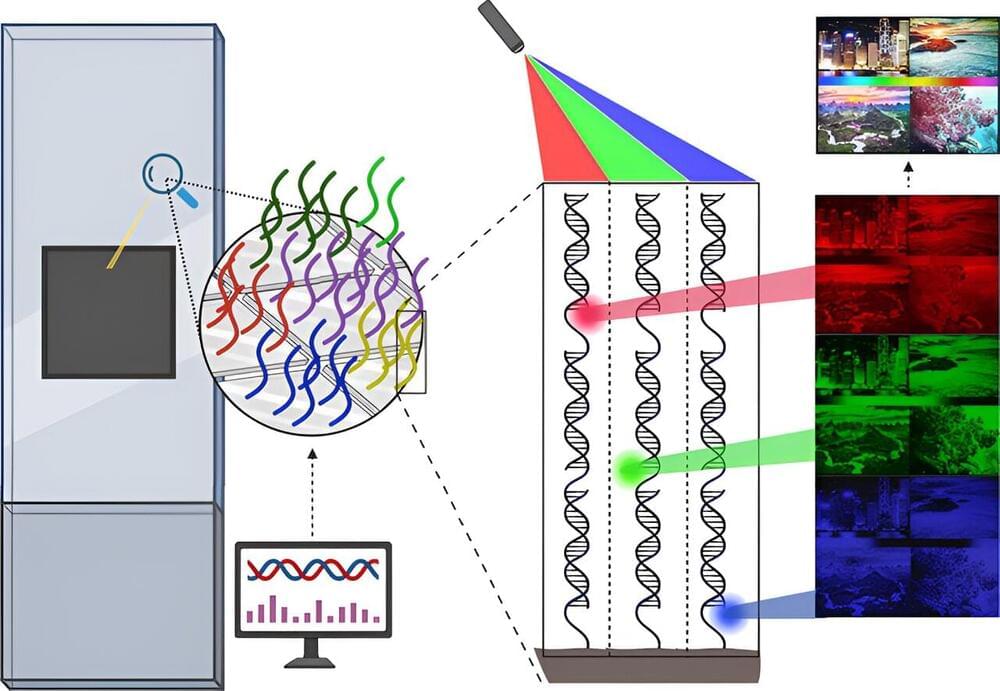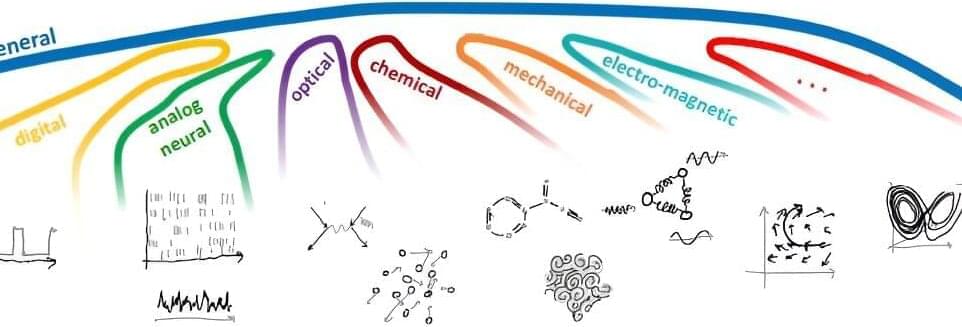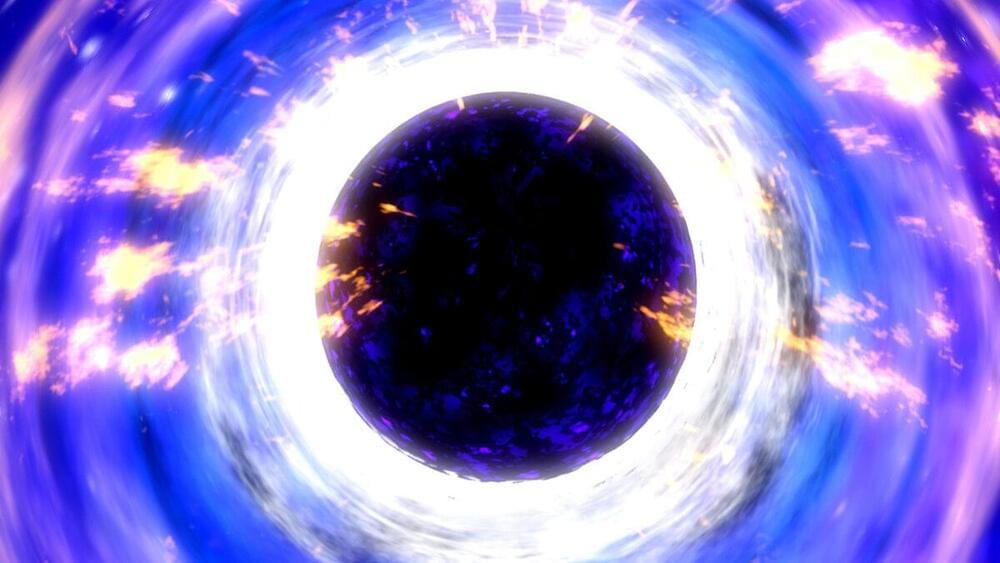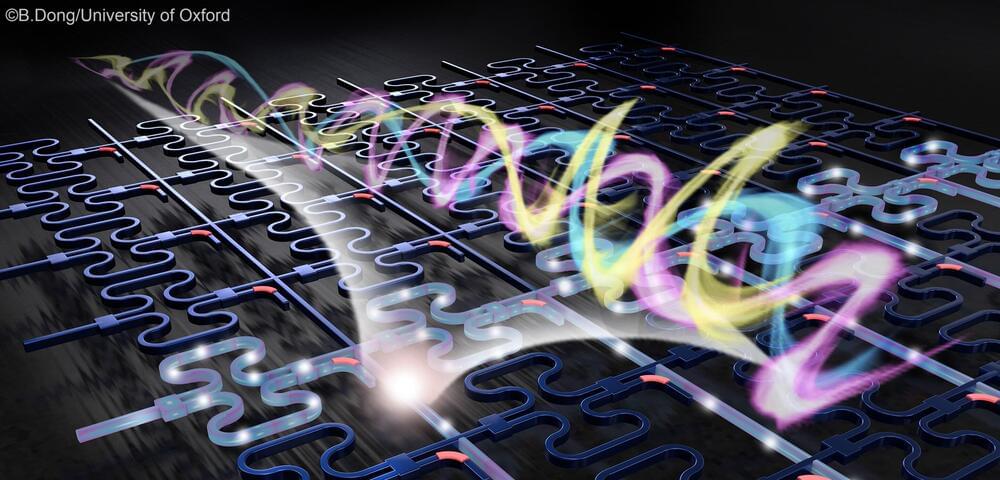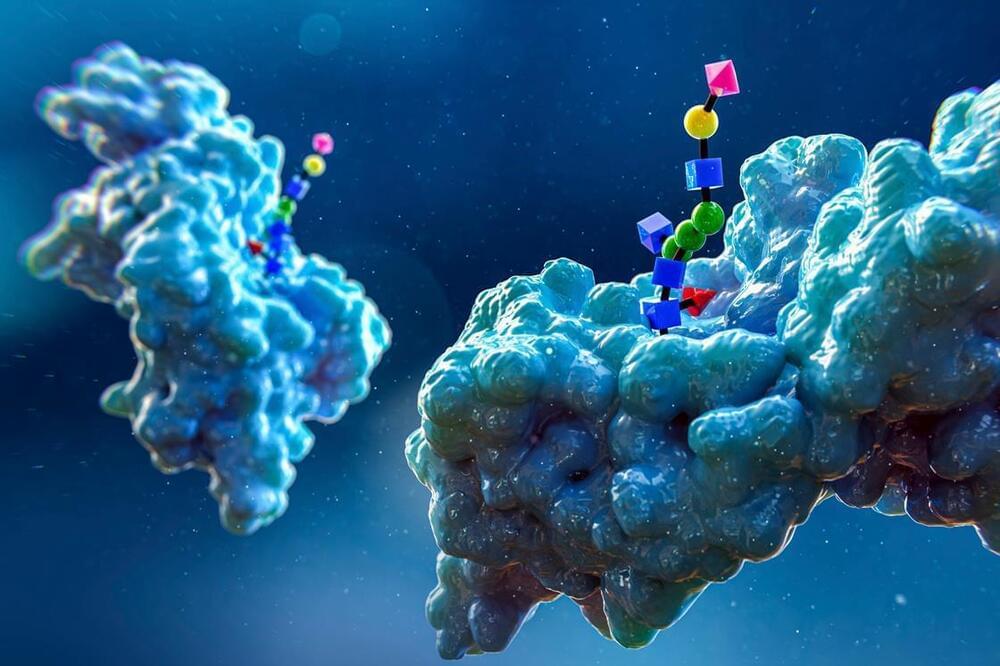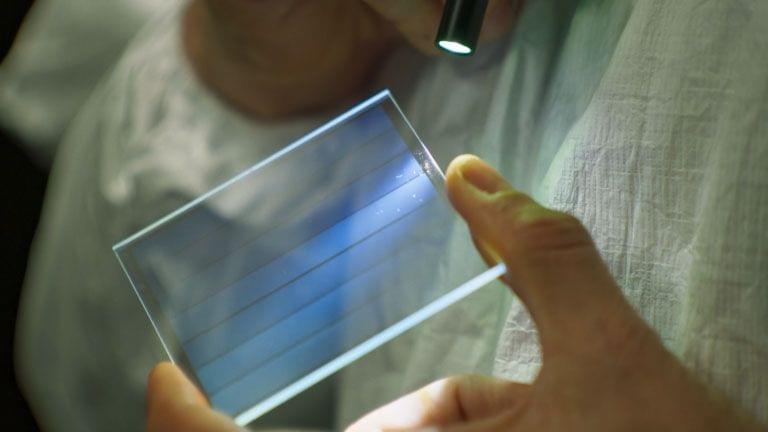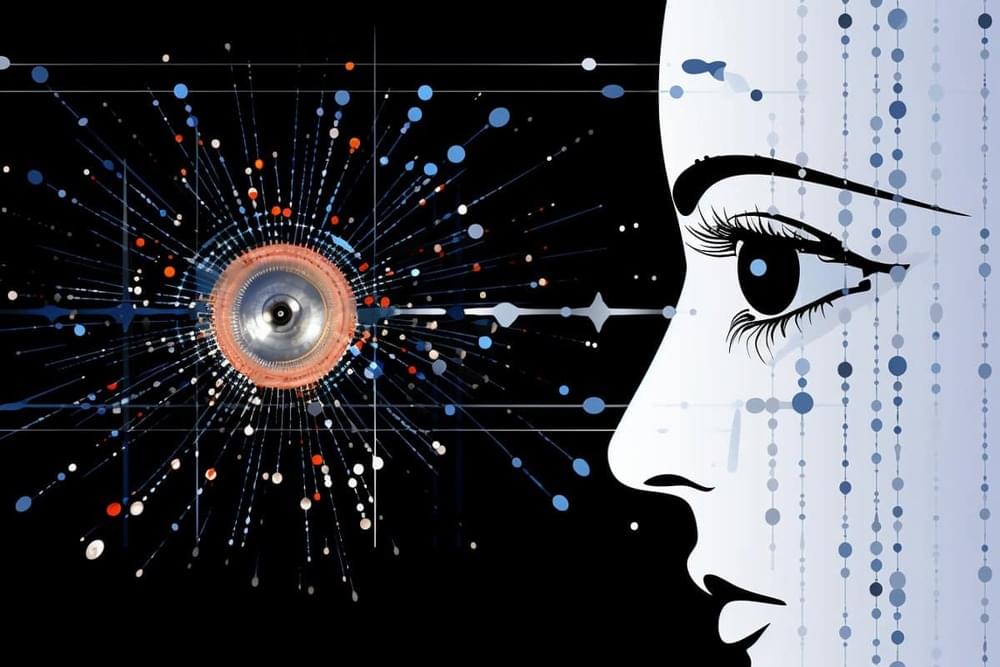Page 1237
Oct 19, 2023
Art with DNA—digitally creating 16 million colors by chemistry
Posted by Jose Ruben Rodriguez Fuentes in categories: biotech/medical, chemistry
The DNA double helix is composed of two DNA molecules whose sequences are complementary to each other. The stability of the duplex can be fine-tuned in the lab by controlling the amount and location of imperfect complementary sequences.
Fluorescent markers bound to one of the matching DNA strands make the duplex visible, and fluorescence intensity increases with increasing duplex stability. Now, researchers at the University of Vienna succeeded in creating fluorescent duplexes that can generate any of 16 million colors—a work that surpasses the previous 256 colors limitation.
This very large palette can be used to “paint” with DNA and to accurately reproduce any digital image on a miniature 2D surface with 24-bit color depth. This research was published in the Journal of the American Chemical Society.
Oct 19, 2023
New computing hardware needs a theoretical basis, says study
Posted by Jose Ruben Rodriguez Fuentes in categories: computing, engineering, neuroscience
There is an intense, worldwide search for novel materials to build computer microchips with that are not based on classic transistors but on much more energy-saving, brain-like components. However, whereas the theoretical basis for classic transistor-based digital computers is solid, there are no real theoretical guidelines for the creation of brain-like computers.
Such a theory would be absolutely necessary to put the efforts that go into engineering new kinds of microchips on solid ground, argues Herbert Jaeger, Professor of Computing in Cognitive Materials at the University of Groningen.
Computers have, so far, relied on stable switches that can be off or on, usually transistors. These digital computers are logical machines and their programming is also based on logical reasoning. For decades, computers have become more powerful by further miniaturization of the transistors, but this process is now approaching a physical limit. That is why scientists are working to find new materials to make more versatile switches, which could use more values than just the digitals 0 or 1.
Oct 19, 2023
Controlling quantum biological electron tunnelling could help brain cancer patients
Posted by Jose Ruben Rodriguez Fuentes in categories: biotech/medical, neuroscience, quantum physics
A technique based on modulating quantum processes inside human cells could improve treatment for glioblastoma.
Oct 19, 2023
Scientists Can Now Make Tiny Black Holes With Pseudogravity
Posted by Jose Ruben Rodriguez Fuentes in categories: cosmology, physics
Published 8 seconds ago.
Physicists at the Kyoto Institute of Technology altered a special material called a photonic crystal to change the way light moves, creating pseudogravity, an effect similar to a tiny black hole. The experiment was inspired by Einstein’s theory of relativity and showcased light similar to how it would be if it were passing through a gravitational field. According to Science Alert, this experiment has far-reaching implications for the control and manipulation of light in optics and communications technology.
Oct 19, 2023
From square to cube: Hardware processing for AI goes 3D, boosting processing power
Posted by Jose Ruben Rodriguez Fuentes in category: robotics/AI
In a paper published in Nature Photonics, researchers from the University of Oxford, along with collaborators from the Universities of Muenster, Heidelberg, and Exeter, report on their development of integrated photonic-electronic hardware capable of processing three-dimensional (3D) data, substantially boosting data processing parallelism for AI tasks.
Conventional computer chip processing efficiency doubles every 18 months, but the processing power required by modern AI tasks is currently doubling around every 3.5 months. This means that new computing paradigms are urgently needed to cope with the rising demand.
One approach is to use light instead of electronics—this allows multiple calculations to be carried out in parallel using different wavelengths to represent different sets of data. Indeed, in ground breaking work published in the journal Nature in 2021, many of the same authors demonstrated a form of integrated photonic processing chip that could carry out matrix vector multiplication (a crucial task for AI and machine learning applications) at speeds far outpacing the fastest electronic approaches. This work resulted in the birth of the photonic AI company, Salience Labs, a spin-out from the University of Oxford.
Oct 19, 2023
Direct imaging reveals individual protein-bound glycans in new detail
Posted by Shailesh Prasad in category: biological
Scanning tunnelling microscopy images of simple glycoconjugates and glycosaminoglycans and their corresponding structures.
Scanning tunnelling microscopy has enabled researchers to directly image important sugar molecules attached to lipids and proteins. The experiments provide a picture at the single-molecule level of the sequences and locations of glycans bound to important biomolecules, offering new insight into the role they play in biology.
Oct 19, 2023
Microsoft Repositions 7TB ‘Project Silica’ Glass Media as a Cloud Storage Solution
Posted by Shailesh Prasad in categories: computing, sustainability
Microsoft has decided its Project Silica storage would be an efficient and sustainable choice for its cloud data centers, with the 7 TB glass media touted to last 10,000 years.
Oct 19, 2023
Neural Networks’ Unique Perceptions: Decoding Machine vs. Human Sensory Recognition
Posted by Shailesh Prasad in category: robotics/AI
Summary: A new study delves into the enigmatic realm of deep neural networks, discovering that while these models can identify objects akin to human sensory systems, their recognition strategies diverge from human perception. When prompted to generate stimuli similar to a given input, the networks often produced unrecognizable or distorted images and sounds.
This indicates that neural networks cultivate their distinct “invariances”, differing starkly from human perceptual patterns. The research offers insights into evaluating models that mimic human sensory perceptions.
Oct 19, 2023
Physicists Use Quantum Mechanics to Pull Energy out of Nothing
Posted by Shailesh Prasad in categories: energy, quantum physics
“This is real physics, not science fiction”. Two physics experiments showed that it is possible to produce energy inside an energy vacuum.
The quantum energy teleportation protocol was proposed in 2008 and largely ignored. Now two independent experiments have shown that it works.

